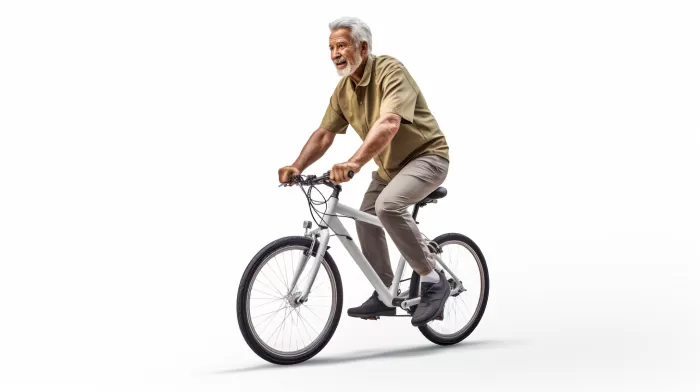Aerobic exercise is an essential part of maintaining optimum health, with benefits that include improved heart health and increased endurance. However, it’s crucial to choose the right activity. Research in the United Kingdom indicates that one popular form of aerobic exercise—cycling—may increase the risk of cancer for men aged 50 and older.
Cycling’s Potential Connection to Cancer Development
The study examined cycling habits of more than 5,000 men over a one-year period. Researchers found that an increase in weekly time spent cycling was linked to an increased risk of developing prostate and testicular cancer. Men who biked for more than 8.5 hours per week were found to be the most at-risk group. This article will dig into more detail about the potential dangers associated with cycling, why we should pay attention to these findings, and how to mitigate the risks.
Research Findings: A Closer Look
Although this research demonstrates a connection between cycling and cancer risks, there are still many unanswered questions. The study did not explore specific causes, nor did it conclusively prove that cycling directly leads to the development of cancer. However, it demonstrates a correlation between increased time spent cycling and a higher incidence of prostate and testicular cancer among men aged 50 and older. This warrants further investigation to understand the underlying relationship between these variables and to potentially pinpoint the cause(s) of this unpleasant side effect of an otherwise healthy activity.
The Importance of Intervention: Reducing Risk
Despite the study’s findings, it’s crucial not to leap to conclusions or assume that all cycling spells doom for men in their golden years. On the contrary, moderate physical activity is undeniably beneficial for overall health, with cycling being an excellent low-impact workout. However, it may be wise to consider implementing strategies to mitigate potential risks associated with excessive cycling.
To reduce the risk of injury and discomfort, bike enthusiasts should consider adjusting their bike seat for optimal riding position and seek out proper equipment and clothing to ensure a comfortable ride. The Prostate Cancer Foundation suggests using a split or cushioned seat to reduce pressure on the perineum, an area with a high concentration of nerves and blood vessels that serves as a key support when riding. Experimenting with different types of bike seats and investing in padded shorts can further enhance comfort and support.
Cycling at a moderate volume instead of committing to excessive hours on the bike could also reduce the potential health risks. Engaging in other aerobic activities, such as swimming or brisk walking can also contribute to overall cardiovascular health without overexposure to a single activity.
The Bottom Line
It is important to remember that the study’s conclusions should be taken with a grain of salt. Further research is needed to ascertain the precise relationship between cycling and the risk of cancer in older men. However, this finding serves as a reminder to approach all physical activities with moderation and mindfulness.
By making smart choices about equipment, riding positions, and cycling duration, those who enjoy cycling as a form of exercise can continue to benefit from the many positive aspects of this activity. It is important not to let fear or panic dictate decisions. Instead, carefully examine the facts, weigh potential risks, and balance cycling with other forms of exercise to cultivate a diverse, fulfilling, and, most importantly, safe fitness routine.



